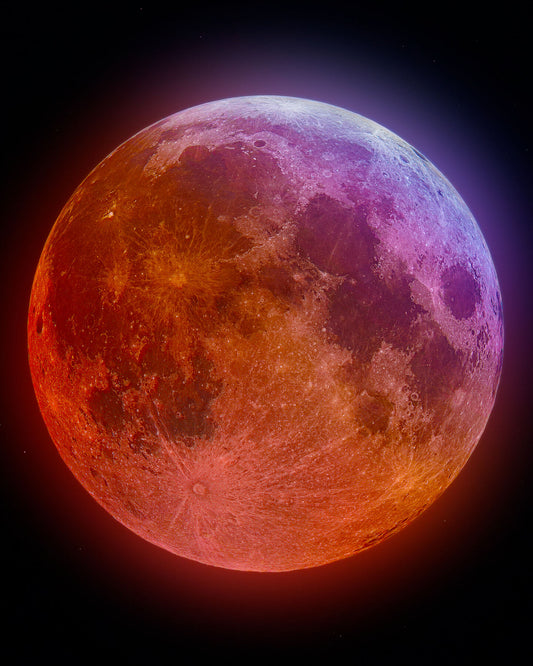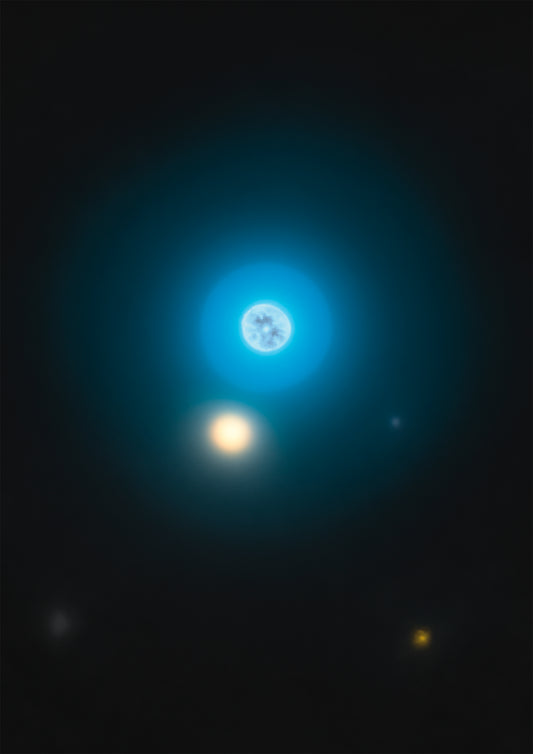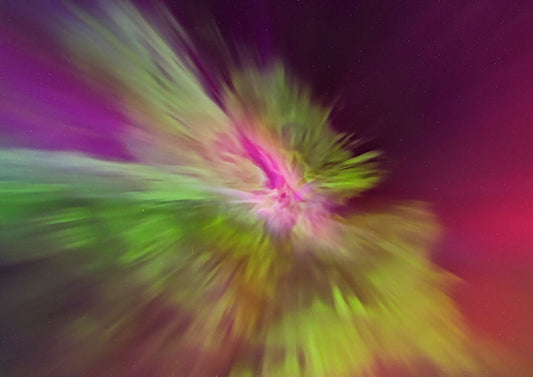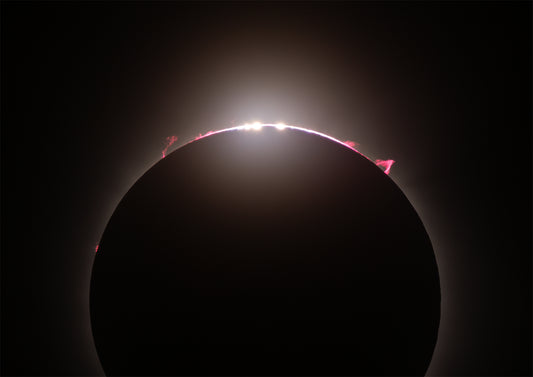
Within the Blue Snowball
Jason GuenzelShare
My latest astrophotography project is a study of a fairly well-known planetary nebula. The "Blue Snowball" is estimated to be roughly 2500 light years from Earth. The central star of this nebula is still an O-type star, meaning it hasn't yet cooled into a white dwarf. The intense radiation makes the nebula core extremely luminous. This compact size and brightness lead me to believe the Blue Snowball is a young planetary nebula, still developing before our eyes.

The inner nebulosity is so bright, in fact, it was overexposed in single sub-frames when using my normal deep sky exposure settings. This innermost ring is approximately 15 arc-seconds in diameter. This is TINY and puts the size in the same range of planetary photography. To me, it is reminiscent of the older, more developed, and larger Dumbbell Nebula, Messier 27.
Beyond the inner ring is a (only slightly) dimmer disk of about 30 arc-seconds. One can almost imagine this envelope to be an older iteration of the bright central one, expanding into space and dimming in the process.
I spent some time to reprocess the data from the inner core area in the same manner as the Hubble Space Telescope's famous image of this nebulosity. I'm quite amazed by scanning between them just how well the amateur telescope data compares! Check it out.

Though the colors of my result closely resemble the Hubble data. We did not arrive at these tones in the same way. The Hubble data includes ionized Nitrogen data. This gives rise to the crisp red nebulous features surrounding the inner ring.
Based on photo from the Hubble Space Telescope, it would seem this is the extent of the nebula. But as we zoom out and stack long exposures, we begin to see a faint outer halo many times larger than the core area. This halo shines brightly in ionized Oxygen (OIII) and I spent over 12 hours collecting light with this narrowband filter. Fainter still is the ionized Hydrogen (Ha) data. This only shows up dotted around the periphery and extending away in a tail-like structure. By overlaying these two filters and mapping them appropriate to red (Ha) and blue (OIII) we come up with a roughly accurate color spectrum. Where the hydrogen and oxygen mix, the tones give off a purple/magenta hue. This nebula really does not have much in the way of "free" hydrogen, as it mostly overlaid the oxygen nebulosity.

I had a lot of fun bringing this image to life in a couple different videos which I'll embed here.
If you dig it and want to support me, consider hanging a print on your wall. This shot is in my store at the link here or navigate to the shop in the menu above. Thank you for checking it out!
- Jason




